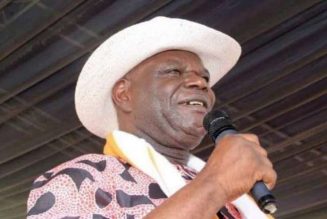
Music producer Eric Musyoka. He created the original music for the 2D animation Twende. PHOTO | POOL
In 2020, various producers were invited to bid for the opportunity to create original music for an animated series that was in the works at the time. Ultimately, renowned Kenyan music producer and engineer Eric Musyoka was selected to create music for the project, a 2D animation titled Twende that premiered last week on the Showmax streaming platform.
In the pre-production process that started in May 2021 and lasted almost six months, Musyoka worked with animatics, which is a series of images played in sequence with a soundtrack. A year later, the actual process of recording music for the 12 episodes of the series started.
Read: Musyoka, the hitmaker
“This is the longest project I have worked on, from conception to the end of the project,” remarked Musyoka during a Zoom interview on Tuesday this week. “But it is very fulfilling to see how the music has contributed to the success of the series.”
The voices for the characters, which include Junior Nyongo, June Gachui, Elsaphan Njora, Mkamzee Mwatela and Charles Ouda, have also been recorded at Musyoka’s Decimal Records studio which has given him the advantage of interacting closely with the story and understanding the characters.
“It makes it easier because I can see the characters and I also read through the scripts while editing the voices,” he says.
Even though Musyoka has in the past been involved as a music producer/engineer for popular films like The First Grader, Rafiki and Disconnect, creating music for this animation presented a whole new challenge because the sequences are so brief defying the typical format of scoring music for film.
“Literally you could do a jig for three seconds and that is it. The saving grace with this project is that no matter what, I will only do a maximum of 11 minutes of music for each episode, as opposed to two hours of music in a feature film,” he says.
Scoring for animation also offered him the creative freedom to use a wide variety of sounds, not just limited to music as opposed to a TV series or a film where you are confined to the reality of what’s happening on the screen.
“If you want a splashing sound in animation, because it is hyperrealism, you can go crazy with your sound design,” explains Musyoka.
In the first episode of Twende when the showy stunt driver is bouncing around, Musyoka created a jig of barely 5 seconds using a bongo drum. The kind of creative latitude, he acknowledges, that made the process a whole lot of fun and very exciting.
“I have done music for animation before like The Legend of Lwanda Magere, but in Twende the music interacts with the characters in a different way. A lion could be roaring but to a different sound, not a roar because I am allowed to go wild with hyperrealism.”
As the creator of the score, the most important task was to understand the characters and their unique personalities and tailor the music to represent these traits.
“You cannot have a nonchalant character accompanied by music that is full of orchestral drum beats, it is not a realistic representation,” says Musyoka.

Music producer Eric Musyoka. He created the original music for the 2D animation Twende. PHOTO | POOL
“As the music creator, I don’t always get the perfect match for every character at the first attempt and so I go back and do it again until the music connects with the character’s energy and personality.”
The experience of creating music for Twende was so technical that it could take two to three weeks to craft the music for just those 11 minutes of one episode. During the demo stage, the producer writes all elements and incorporates additional musicians like drummers, and guitarists, which is then presented to the director for approval. “It is not a demo in the sense of just a general sound. It has to be detailed and precise so that the director knows at that stage if there should be changes,” says Musyoka.
Read: Thriller 40: A sneak peek at film on the making of Michael Jackson’s best-selling album
Dubbing takes place after the graphics have been fixed, and colours added, then the producer reworks the music, if need be, and add new vocals. “You can’t also be too heavy with the music at the expense of dialogue so we have to attain the balance. My work is to interpret the director’s perspective,” says Musyoka.
Audiences watch films and series without paying particular attention to the music score but Musyoka says we should try to imagine what visuals would be without accompanying music and other sounds. “Music drives the emotions, helps the viewer interpret the scene emotionally, visuals alone cannot do that,” he says.









